
The Majestic Apostolic Palace: A Journey Through Vatican City's Crown Jewel
Discover the Apostolic Palace in Vatican City: A monumental journey through art, history, and spirituality in the heart of the world's smallest independent state.
The Apostolic Palace, nestled within the heart of Vatican City, is a treasure trove of art, history, and spirituality. As the official residence of the Pope, this magnificent structure stands as a testament to centuries of religious significance and architectural grandeur. Visitors will find themselves captivated by the intricate details and the awe-inspiring beauty that resonates throughout the palace. Start your exploration with the world-renowned Vatican Museums, home to an extensive collection of invaluable artworks and historical artifacts. The journey through these exhibits leads to the iconic Sistine Chapel, where Michelangelo's breathtaking frescoes adorn the ceiling and walls, leaving visitors in sheer wonder. Don't miss the Raphael Rooms, a suite of reception rooms painted by the master artist Raphael, which showcase the pinnacle of Renaissance art. Each room tells a different story, combining religious themes with stunning artistic expression. Finally, the Apostolic Palace itself is a marvel of Renaissance and Baroque architecture, with its grand halls, opulent rooms, and serene courtyards offering a unique glimpse into the papal lifestyle. While Vatican City may be the smallest independent state in the world, the experience of visiting the Apostolic Palace is nothing short of monumental. It offers a profound and enriching journey through the heart of Catholicism, art, and history.
Local tips in Apostolic Palace
- Book your tickets online in advance to skip the long lines.
- Wear comfortable shoes as the tour involves a lot of walking.
- Dress modestly to respect the religious nature of the site.
- Visit early in the morning or late in the afternoon to avoid peak crowds.
- Take a guided tour for a deeper understanding of the art and history.
The Majestic Apostolic Palace: A Journey Through Vatican City's Crown Jewel
The Apostolic Palace, nestled within the heart of Vatican City, is a treasure trove of art, history, and spirituality. As the official residence of the Pope, this magnificent structure stands as a testament to centuries of religious significance and architectural grandeur. Visitors will find themselves captivated by the intricate details and the awe-inspiring beauty that resonates throughout the palace. Start your exploration with the world-renowned Vatican Museums, home to an extensive collection of invaluable artworks and historical artifacts. The journey through these exhibits leads to the iconic Sistine Chapel, where Michelangelo's breathtaking frescoes adorn the ceiling and walls, leaving visitors in sheer wonder. Don't miss the Raphael Rooms, a suite of reception rooms painted by the master artist Raphael, which showcase the pinnacle of Renaissance art. Each room tells a different story, combining religious themes with stunning artistic expression. Finally, the Apostolic Palace itself is a marvel of Renaissance and Baroque architecture, with its grand halls, opulent rooms, and serene courtyards offering a unique glimpse into the papal lifestyle. While Vatican City may be the smallest independent state in the world, the experience of visiting the Apostolic Palace is nothing short of monumental. It offers a profound and enriching journey through the heart of Catholicism, art, and history.
When is the best time to go to Apostolic Palace?
Iconic landmarks you can’t miss
Vatican Museums
Discover the artistic treasures of the Vatican Museums, where history and beauty intertwine in every masterpiece.

St. Peter's Basilica
Explore the grandeur of St. Peter's Basilica, an iconic symbol of faith and artistic brilliance in the heart of Vatican City.

Sistine Chapel
Explore the Sistine Chapel: A masterpiece of Renaissance art and a spiritual haven in Vatican City, where history and beauty converge.

Saint Peter's Square
Discover the grandeur of Saint Peter's Square, a masterpiece of architecture and spirituality in the heart of Vatican City.

St. Peter Square Obelisk
Discover the rich history and breathtaking architecture of the St. Peter Square Obelisk, a monumental landmark in Vatican City.
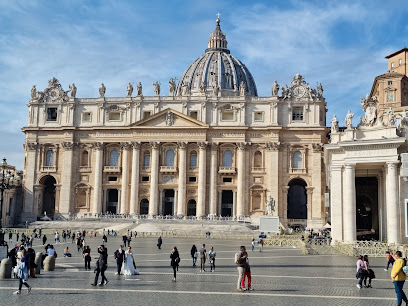
Gardens of Vatican City
Explore the breathtaking beauty and serene landscapes of the Gardens of Vatican City, a hidden gem in the heart of Rome's sacred space.

Chiesa di Sant'Anna dei Palafrenieri
Discover the serene beauty of Chiesa di Sant'Anna dei Palafrenieri, a captivating Catholic church in the heart of Vatican City, rich in history and spirituality.

Paul VI Hall
Experience the architectural beauty and cultural significance of Paul VI Hall in Vatican City, a must-visit for every traveler in Rome.

Vatican Necropolis
Unearth the rich history of the Vatican Necropolis, an ancient burial ground beneath St. Peter's Basilica, where early Christians found eternal rest.

Pine Courtyard
Discover the tranquility of the Pine Courtyard in Vatican City, a stunning garden blending history, art, and nature in a serene setting.

Paintings Gallery of the Vatican Museums
Explore the Paintings Gallery of the Vatican Museums, home to masterpieces by Caravaggio, Raphael, and more, in the heart of Vatican City.
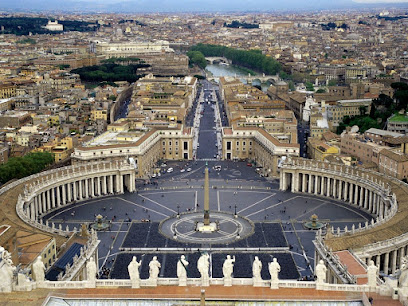
Bernini Fountain
Discover the splendor of the Bernini Fountain, an artistic gem in the heart of Vatican City, where history and beauty converge.

Excavation Office
Explore the hidden historical treasures beneath St. Peter's Basilica at the Excavation Office in Vatican City, a unique glimpse into ancient Roman and Christian heritage.

Gallery of Maps
Explore the Gallery of Maps in Vatican City, where stunning frescoes and rich history converge in an artistic masterpiece.

The Last Judgment
Discover Michelangelo's The Last Judgment in the Sistine Chapel, a breathtaking masterpiece that embodies the essence of divine judgment and human fate.

Unmissable attractions to see
Trevi Fountain
Discover the Trevi Fountain, Rome's iconic Baroque masterpiece, where wishes are made, and memories are created amidst stunning artistry and rich history.

Colosseum
Discover the Colosseum, Rome's iconic amphitheater, and immerse yourself in the history of gladiators and ancient Roman architecture.

Pantheon
Discover the Pantheon, Rome's iconic historical landmark, renowned for its stunning architecture and rich cultural heritage.

Piazza Navona
Discover the enchanting beauty of Piazza Navona, a historical landmark in Rome that blends Baroque architecture with vibrant local culture.

Vatican Museums
Explore the Vatican Museums, home to masterpieces like the Sistine Chapel and a treasure trove of art and history in Vatican City.

St. Peter's Basilica
Explore St. Peter's Basilica, a masterpiece of Renaissance architecture and the spiritual heart of Vatican City, rich in art and history.

Roman Forum
Explore the Roman Forum, an open-air museum where ancient history comes alive among the ruins of Rome's political and social heart.

Castel Sant'Angelo
Experience the grandeur of Castel Sant'Angelo, a historical castle in Rome offering rich history, stunning views, and captivating exhibitions.
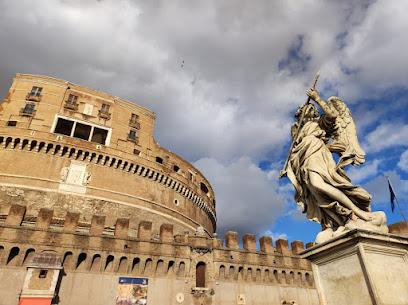
Sistine Chapel
Explore the Sistine Chapel, a breathtaking masterpiece of Renaissance art and a sacred site of the Catholic Church, located in Vatican City.

Villa Borghese
Explore the natural beauty and artistic treasures of Villa Borghese, a serene park in the heart of Rome, perfect for leisurely strolls and cultural experiences.

Spanish Steps
Discover the enchanting Spanish Steps in Rome, a monumental masterpiece connecting history, culture, and vibrant city life.

Circus Maximus
Explore the historic Circus Maximus, the ancient Roman chariot racing stadium, and immerse yourself in the grandeur of Rome's rich heritage.

Papal Basilica of Saint Mary Major
Explore the Papal Basilica of Saint Mary Major, a masterpiece of art and architecture in the heart of Rome, rich in history and spiritual significance.

Largo di Torre Argentina
Explore the enchanting Largo di Torre Argentina, an archaeological gem in the heart of Rome, showcasing ancient ruins and a lively atmosphere.

Villa d'Este
Experience the beauty and history of Villa d'Este, a stunning Renaissance masterpiece with magnificent gardens and enchanting fountains in Tivoli, Italy.

Essential places to dine
Pastasciutta
Experience authentic Italian fast food at Pastasciutta in Rome – where delicious pasta meets quick service in a charming atmosphere.

Ristorante dei Musei
Experience authentic Italian flavors at Ristorante dei Musei, where delicious pizza meets warm Roman hospitality.

La Soffitta Renovatio
Experience authentic Italian cuisine at La Soffitta Renovatio in Rome - where delicious pizza meets traditional flavors.

Ristorante Arlù
Discover authentic Italian flavors at Ristorante Arlù in Borgo Pio - where every dish tells a story.
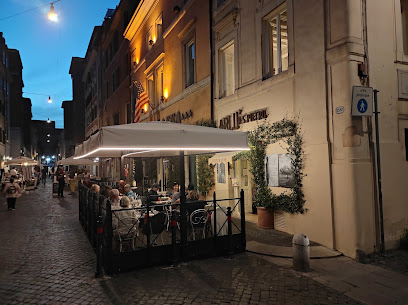
Satiricus Ristorante Pizzeria
Experience authentic Italian cuisine at Satiricus Ristorante Pizzeria in Rome – where delicious pizzas meet a welcoming atmosphere.

Forno Feliziani
Experience authentic Roman pizza at Forno Feliziani – where tradition meets taste in every slice.
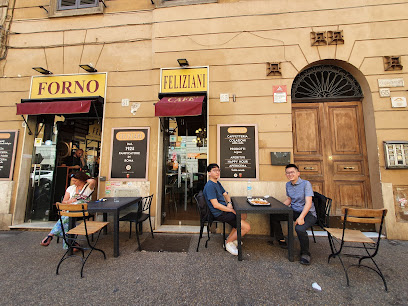
La Locanda di Pietro
Experience authentic Italian cuisine at La Locanda di Pietro - a charming eatery serving delectable Mediterranean dishes and fresh pizzas.

Ristorante Da Paolo
Experience authentic Italian cuisine at Ristorante Da Paolo in Rome - where every meal is a celebration of flavor.

Vinsanto Vino & Cucina
Discover the essence of Italian cuisine at Vinsanto Vino & Cucina, where every dish tells a story of tradition and flavor in the heart of Rome.

Osteria delle Commari
Experience authentic Italian flavors at Osteria delle Commari in Rome - where gluten-free meets Mediterranean delight.

Ago & Lillo Bistrot
Discover the essence of Italian cuisine at Ago & Lillo Bistrot in Rome - where every dish tells a story.
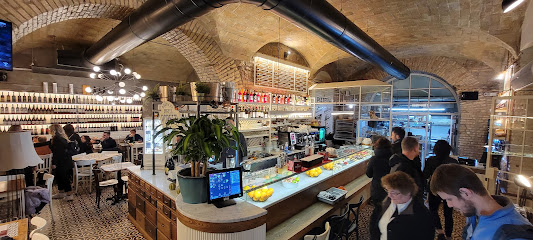
Bottega Vittoria
Experience authentic Italian cuisine at Bottega Vittoria – where tradition meets flavor in the heart of Rome.

Ristorante Trattoria Da Marcella
Experience authentic Italian flavors at Ristorante Trattoria Da Marcella, where every dish tells a story of tradition and taste.

BorgoPio92 Bistrò Caffè
Experience authentic Italian cuisine at BorgoPio92 Bistrò Caffè near Vatican City—where every bite tells a story.

Ristorante Krugh
Discover authentic Italian flavors at Ristorante Krugh, where every dish tells a story from the heart of Rome.

Markets, malls and hidden boutiques
History and Magic
Explore unique collectibles and exquisite costume jewelry at 'History and Magic,' a treasure trove of artistry in the heart of Rome.

Annona Vatican City
Discover the culinary treasures of Vatican City at Annona, your go-to grocery store for fresh produce and local delicacies.

Libreria Ancora Store - Roma
Explore the enchanting world of books and religious artifacts at Libreria Ancora Store, a must-visit destination in Rome for book lovers and spiritual seekers.

Savelli Religious (Savelli Art and Tradition)
Explore Savelli Religious in Rome for unique religious gifts and exquisite jewelry, reflecting Italy's rich artistic traditions.

St. Peter's Gallery
Explore unique gifts and artisan crafts at St. Peter's Gallery, a charming destination near St. Peter's Basilica in the heart of Rome.
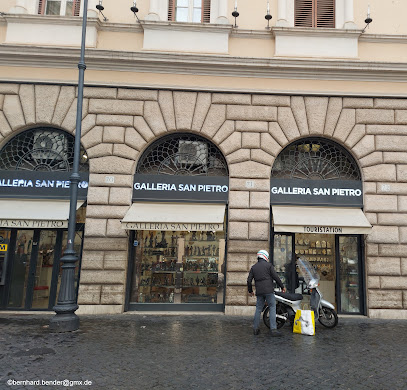
Mondo Cattolico
Explore Mondo Cattolico in Vatican City for an exquisite selection of religious artifacts and unique souvenirs reflecting the city's spiritual heritage.

Vatican Emporium - Religious Articles & Gifts
Discover exquisite religious articles and gifts at Vatican Emporium, your gateway to authentic spiritual treasures in Rome.

Tourist Information Office
Explore Vatican City with the Tourist Information Office: Your source for souvenirs, books, and guidance on your journey through history.

Galleria Mariana
Explore the heart of Rome at Galleria Mariana, your destination for authentic religious goods and unique spiritual treasures.

Souvenirs San Pietro Sas di Ferru Zenobio E C.
Discover unique religious souvenirs at Souvenirs San Pietro, just steps from the Vatican, and take home a piece of Rome's spiritual heritage.

Borgo Shop
Explore Borgo Shop in Rome for an exquisite selection of religious artifacts and souvenirs, reflecting Italy's profound spiritual heritage.

Mango Arredi Sacri
Explore Mango Arredi Sacri, a gem in Rome's jewelry scene, offering handcrafted pieces that reflect Italy's rich cultural heritage.

Porta Angelica Srl
Discover authentic religious artifacts and souvenirs at Porta Angelica, a charming store near the Vatican in Rome, Italy.

Emporio Vaticano
Discover meaningful religious artifacts and unique souvenirs at Emporio Vaticano, your spiritual shopping destination near the Vatican.

HUMILIS Made in Assisi (Boutique Roma Vaticano)
Explore HUMILIS Made in Assisi, a charming jewelry boutique in Rome, offering exquisite handcrafted pieces inspired by Italian heritage.

Essential bars & hidden hideouts
Caffè Delle Commari
Discover Caffè Delle Commari in Rome – a charming bar and restaurant offering exquisite coffee, cocktails, and Italian culinary delights.

Wine Bar De' Penitenzieri
Discover the ultimate wine experience at Wine Bar De' Penitenzieri in Rome, where exquisite Italian wines and delightful cuisine await you.
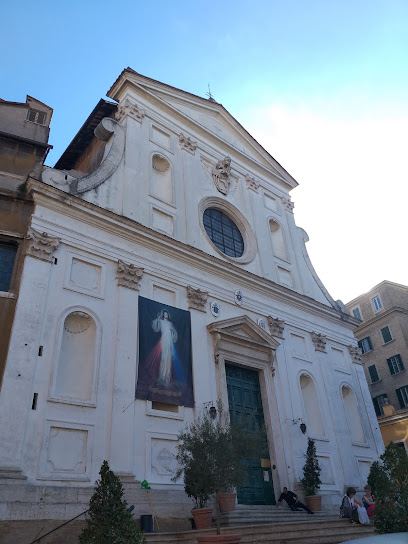
Caffè Vaticano
Experience authentic Italian coffee culture at Caffè Vaticano, the perfect spot for a delightful break near the Vatican.

Cafe San Pietro
Experience the essence of Italian culture at Cafe San Pietro, a cozy bar and cafe near St. Peter's Basilica, perfect for coffee lovers.

Bukowski's Bar
Discover Bukowski's Bar, a cozy bistro in Rome, offering exquisite Italian cuisine and a vibrant atmosphere perfect for a memorable dining experience.

Saxophone Live Pub
Discover the rhythm of Rome at Saxophone Live Pub, where live jazz meets a lively atmosphere for an unforgettable night.
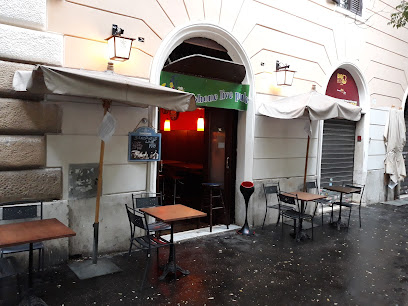
Birreria Martini Esperienza Tedesca
Experience authentic German flavors and a lively atmosphere at Birreria Martini, a must-visit beer hall in the heart of Rome.

Snack Bar Palomba Riccardo
Experience authentic Roman hospitality at Snack Bar Palomba Riccardo, the perfect spot for snacks and drinks in the heart of Rome.

Bar Latteria Giuliani
Experience the warmth of Roman hospitality at Bar Latteria Giuliani, where delightful flavors and a cozy ambiance await every visitor.

Universal Bar Pizzeria
Discover the flavors of Italy at Universal Bar Pizzeria, where authentic pizzas and a vibrant atmosphere await in the heart of Rome.
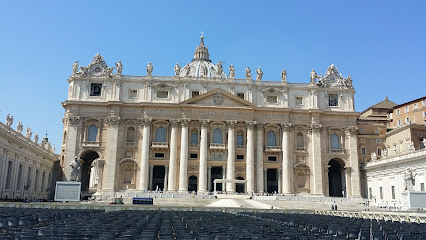
Derry Rock Pub
Immerse yourself in the lively atmosphere of Derry Rock Pub, a unique Irish pub in Rome offering live music, cocktails, and authentic Irish cuisine.

Caffè Leonina
Discover Caffè Leonina: A charming bar in Rome serving authentic coffee and pastries with a local touch.

McQueen Food&Drink
Discover the charm of McQueen Food&Drink, a lively gastropub in Rome offering delectable cuisine, exquisite drinks, and a warm atmosphere for all visitors.

Bar Delle Grazie
Discover the heart of Italian café culture at Bar Delle Grazie, where delicious drinks and a warm atmosphere await in enchanting Rome.

Bar Angeli
Discover the essence of Italian cuisine at Bar Angeli, a cozy grill bar in the heart of Rome serving delicious grilled dishes and local flavors.
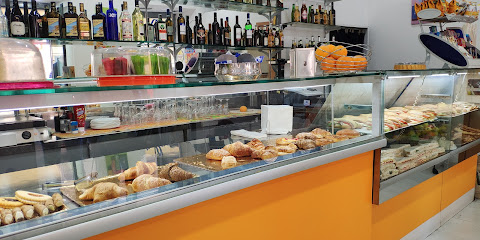
Travel experiences inspired by this city
Explore more travel diariesLocal Phrases
-
- HelloCiao
[chow] - GoodbyeArrivederci
[ah-ree-veh-dehr-chee] - YesSì
[see] - NoNo
[noh] - Please/You're welcomePer favore/Prego
[pehr fah-voh-reh/preh-goh] - Thank youGrazie
[graht-zee-eh] - Excuse me/SorryMi scusi/Scusa
[mee skoo-zee/skoo-zah] - How are you?Come stai?
[koh-meh stah-ee] - Fine. And you?Bene. E tu?
[beh-neh/eh too] - Do you speak English?Parli inglese?
[pahr-lee een-gleh-zeh] - I don't understandNon capisco
[nohn kah-pee-skoh]
- HelloCiao
-
- I'd like to see the menu, pleaseVorrei vedere il menu, per favore
[vohr-ray veh-deh-reh eel meh-noo, pehr fah-voh-reh] - I don't eat meatNon mangio carne
[nohn mahn-joh kahr-neh] - Cheers!Salute!
[sah-loo-teh] - I would like to pay, pleaseVorrei pagare, per favore
[vohr-ray pah-gah-reh, pehr fah-voh-reh]
- I'd like to see the menu, pleaseVorrei vedere il menu, per favore
-
- Help!Aiuto!
[ah-yoo-toh] - Go away!Vai via!
[vah-ee vee-ah] - Call the Police!Chiamate la polizia!
[kyah-mah-teh lah poh-lee-tsyah] - Call a doctor!Chiamate un medico!
[kyah-mah-teh oon meh-dee-koh] - I'm lostMi sono perso
[mee soh-no pehr-soh] - I'm illSono malato
[soh-no mah-lah-toh]
- Help!Aiuto!
-
- I'd like to buy...Vorrei comprare...
[vohr-ray kohm-prah-reh] - I'm just lookingSto solo guardando
[stoh soh-loh gwar-dahn-doh] - How much is it?Quanto costa?
[kwahn-toh koh-stah] - That's too expensiveÈ troppo caro
[eh troh-poh kah-roh] - Can you lower the price?Puoi abbassare il prezzo?
[pwah-ee ahb-bahs-sah-reh eel preh-tsoh]
- I'd like to buy...Vorrei comprare...
-
- What time is it?Che ore sono?
[keh oh-reh soh-no] - It's one o'clockÈ l'una
[eh loo-nah] - Half past (10)Sono le dieci e mezza
[soh-no leh dyeh-chee eh meh-tzah] - MorningMattina
[mah-ttee-nah] - AfternoonPomeriggio
[poh-meh-ree-joh] - EveningSera
[seh-rah] - YesterdayIeri
[yeh-ree] - TodayOggi
[oh-jee] - TomorrowDomani
[doh-mah-nee] - 1Uno
[oo-no] - 2Due
[doo-eh] - 3Tre
[treh] - 4Quattro
[kwah-troh] - 5Cinque
[cheen-kweh] - 6Sei
[say] - 7Sette
[seht-teh] - 8Otto
[oh-toh] - 9Nove
[noh-veh] - 10Dieci
[dyeh-chee]
- What time is it?Che ore sono?
-
- Where's a/the...?Dov'è...?
[doh-veh] - What's the address?Qual è l'indirizzo?
[kwahl eh leen-dee-rit-tsoh] - Can you show me (on the map)?Puoi mostrarmi (sulla mappa)?
[pwah-ee mohs-trahr-mee/sool-lah mahp-pah] - When's the next (bus)?Quando passa il prossimo (autobus)?
[kwahn-doh pahs-sah eel prohs-see-moh/ow-toh-boos] - A ticket (to ....)Un biglietto (per ....)
[oon beel-lyet-toh/pehr]
- Where's a/the...?Dov'è...?
History of Apostolic Palace
-
The Apostolic Palace, known as the Papal Palace, is the official residence of the Pope in Vatican City. Its foundations were laid in the 15th century under the pontificate of Pope Nicholas V, who initiated significant construction projects to consolidate the Vatican's infrastructure. The earliest constructions included administrative offices, private apartments, and chapels, setting the stage for future expansions.
-
Pope Julius II, who reigned from 1503 to 1513, commissioned some of the most famous artists and architects of the Renaissance to enhance the Apostolic Palace. This period saw the creation of the Raphael Rooms, decorated by Raphael and his workshop, and the initiation of the Sistine Chapel's ceiling frescoes by Michelangelo. These works became iconic representations of Renaissance art and architecture, attracting admirers from around the world.
-
The Apostolic Palace is intimately connected with St. Peter's Basilica, one of the most significant architectural projects in history. The construction of the new basilica began in 1506 under Pope Julius II and continued under successive popes. Renowned architects, including Bramante, Michelangelo, and Bernini, contributed to this monumental work, which became the spiritual and administrative heart of the Vatican.
-
One of the most significant cultural institutions within the Apostolic Palace is the Vatican Library, founded in 1475 by Pope Sixtus IV. It houses one of the world's most extensive collections of historical texts, manuscripts, and rare books. The Vatican Secret Archives, now known as the Vatican Apostolic Archives, contain invaluable documents related to the history of the Catholic Church and European history.
-
The Sistine Chapel, part of the Apostolic Palace, is renowned for its ceiling painted by Michelangelo between 1508 and 1512. The chapel also features 'The Last Judgment,' another of Michelangelo's masterpieces, painted between 1535 and 1541. The Sistine Chapel serves both as a place of worship and as the site of the Papal Conclave, where new popes are elected.
-
In the 20th and 21st centuries, the Apostolic Palace has undergone several renovations and modernizations. Pope Paul VI initiated significant updates in the 1960s, including the construction of the Paul VI Audience Hall. More recently, Pope Francis has introduced changes to the palace's administrative functions, aiming to improve transparency and efficiency within the Vatican's governance.
-
The Apostolic Palace is not only a residence but also a symbol of the Catholic Church's spiritual and temporal authority. It serves as the administrative center of the Holy See and the location for many significant religious and diplomatic events. The palace's art and architecture reflect the Church's influence on Western culture and history, making it a vital destination for pilgrims and tourists alike.
Apostolic Palace Essentials
-
Vatican City, where the Apostolic Palace is located, is situated within the city of Rome, Italy. The nearest airport is Leonardo da Vinci-Fiumicino Airport (FCO), approximately 30 kilometers away. From the airport, you can take a taxi, a shuttle bus, or the Leonardo Express train to Rome's Termini Station. The Vatican is easily accessible from Termini Station via Metro Line A (direction Battistini) to the Ottaviano-San Pietro stop, which is a short walk from the Vatican Museums entrance.
-
Rome's public transportation system, consisting of buses, trams, and metro lines, is efficient and well-connected. For the Vatican, the Metro Line A (Ottaviano-San Pietro station) is the most convenient. Alternatively, buses 40, 62, 64, and 81 all stop near the Vatican. Taxis and rideshare services like Uber are also available but more expensive. Walking is a practical option if you are staying nearby, as many of Rome's attractions are within walking distance of each other.
-
The official currency is the Euro (EUR). Credit and debit cards are widely accepted in Rome, including at the Vatican Museums and most restaurants and shops. However, it is advisable to carry some cash for smaller vendors, cafés, or in case of emergencies. ATMs are plentiful throughout Rome and Vatican City, including near the Vatican Museums entrance.
-
Vatican City and the surrounding areas in Rome are generally safe for tourists. However, be cautious of pickpockets, particularly in crowded areas and on public transportation. Avoid walking alone late at night in isolated areas. Keep your belongings secure and be aware of your surroundings. Areas around Termini Station and some parts of Trastevere have higher crime rates, so exercise extra caution there.
-
In case of an emergency, dial 112 for police, medical assistance, or fire services. The Vatican has its own security, but they coordinate with Italian authorities for emergencies. The nearest hospital to the Vatican is Ospedale Santo Spirito, located at Lungotevere in Sassia, 1. Pharmacies (farmacie) are available throughout Rome, and many offer 24-hour service. It's advisable to have travel insurance that covers medical emergencies.
-
Fashion: Do dress modestly, especially when visiting religious sites like the Apostolic Palace. Shoulders and knees should be covered. Avoid wearing hats inside religious buildings. Religion: Do respect the religious significance of the Vatican. Keep voices low and behave reverently. Public Transport: Do validate your ticket before boarding and be respectful of other passengers. Don't eat or drink on public transport. Greetings: Do greet people with a simple 'Buongiorno' (Good morning) or 'Buonasera' (Good evening). A handshake is common. Eating & Drinking: Do try local dishes and wines. Don't rush meals; dining is a leisurely activity in Italy.
-
To experience the Vatican like a local, consider visiting early in the morning or late afternoon to avoid the largest crowds. Purchase tickets to the Vatican Museums online in advance to skip the lines. Explore the nearby Borgo Pio area for authentic Roman cuisine and quaint shops. Engage with locals; many are friendly and appreciate attempts to speak Italian, even if it's just a few phrases. Don't miss the changing of the Swiss Guard and the Sunday Angelus prayer by the Pope in St. Peter's Square.
Trending Landmark in Apostolic Palace
-
Vatican Museums
-
St. Peter's Basilica
-
Sistine Chapel
-
Saint Peter's Square
-
St. Peter Square Obelisk
-
Gardens of Vatican City
-
Chiesa di Sant'Anna dei Palafrenieri
-
Paul VI Hall
-
Vatican Necropolis
-
Pine Courtyard
-
Paintings Gallery of the Vatican Museums
-
Bernini Fountain
-
Excavation Office
-
Gallery of Maps
-
The Last Judgment
Nearby Cities to Apostolic Palace
-
Things To Do in Sistine Chapel
-
Things To Do in St. Peter's Square
-
Things To Do in St. Peter's Basilica
-
Things To Do in Vatican Necropolis
-
Things To Do in Gregorian Etruscan Museum
-
Things To Do in Vatican Museums
-
Things To Do in Vatican Pinacoteca
-
Things To Do in Vatican Gardens
-
Things To Do in Rome
-
Things To Do in Orvieto
-
Things To Do in Assisi
-
Things To Do in Perugia
-
Things To Do in Montepulciano
-
Things To Do in Arezzo
-
Things To Do in Siena














